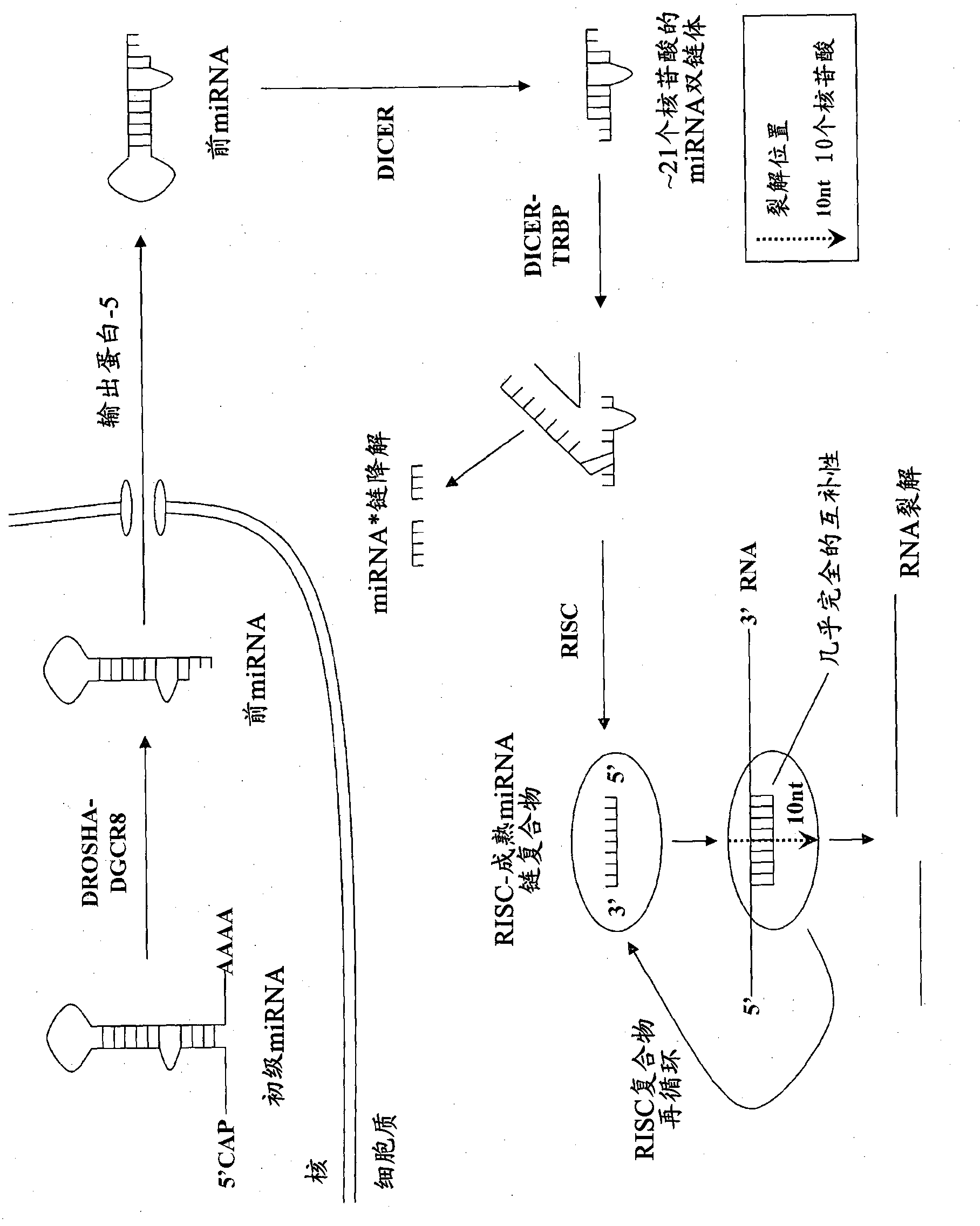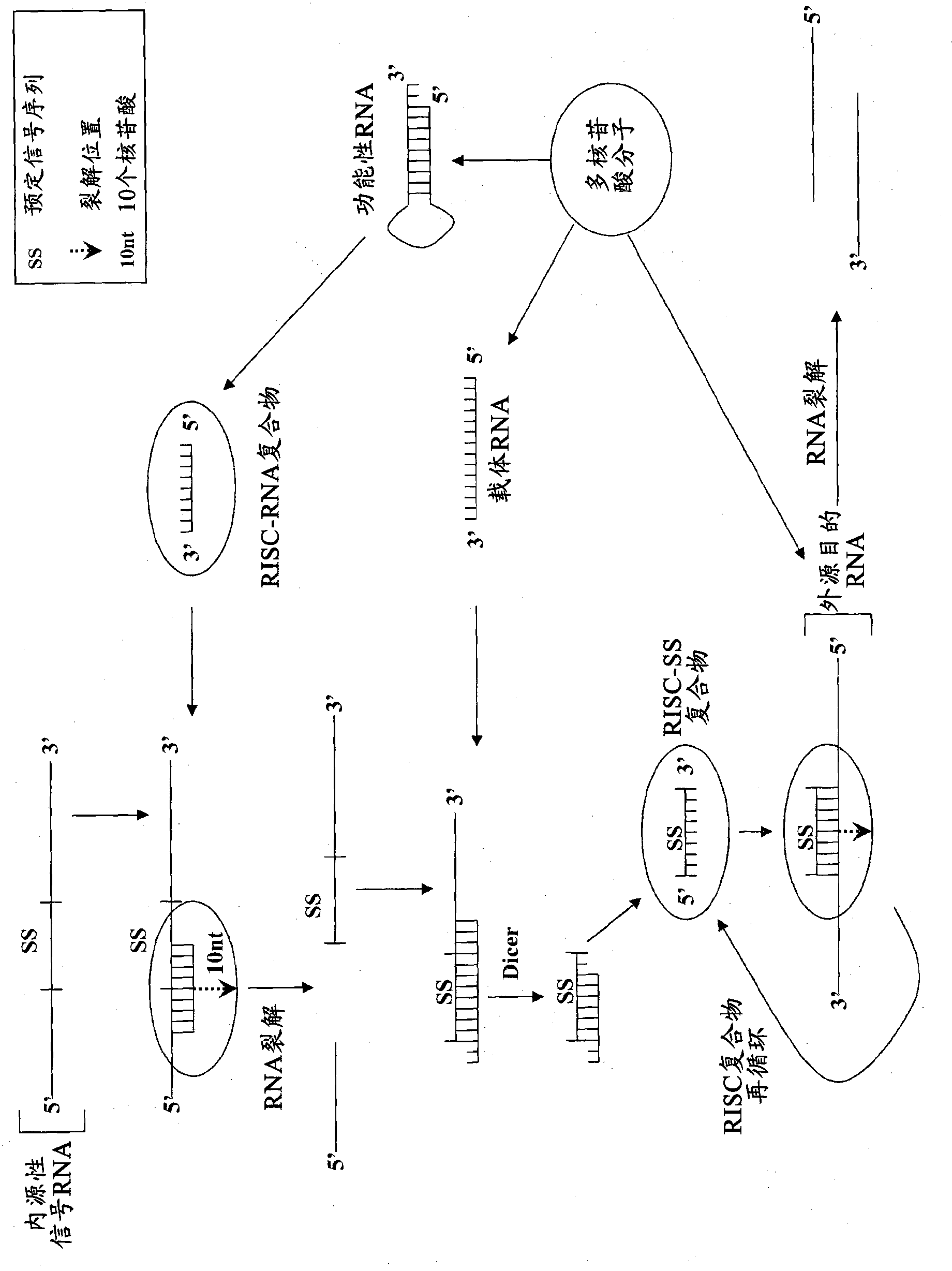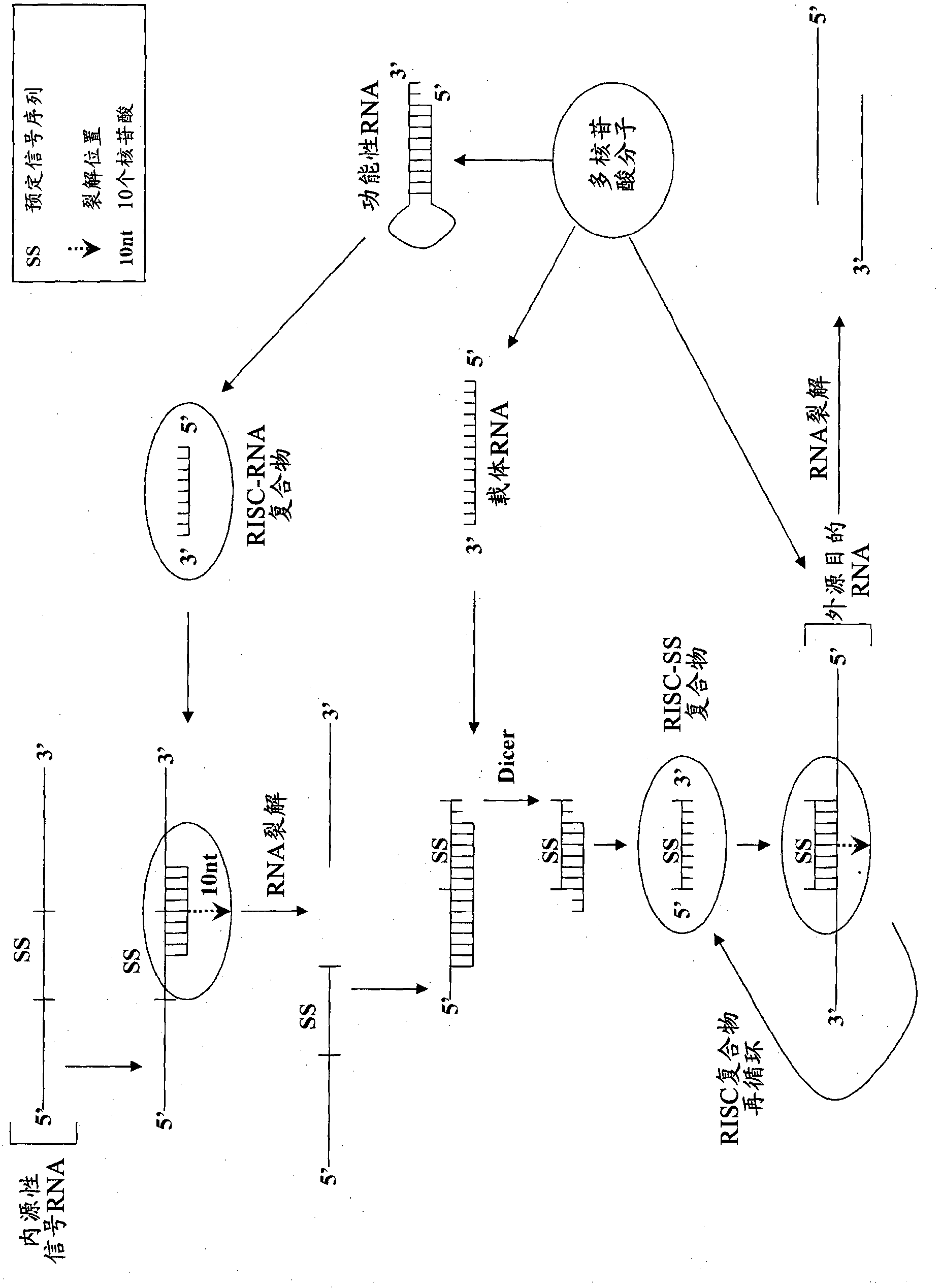Compositions and methods for specific cleavage of exogenous rna in a cell
A composition and exogenous technology, applied in the field of compositions for polynucleotide expression, can solve the problems of unsuitable cancer-derived signal sequences, harmful side effects and the like
- Summary
- Abstract
- Description
- Claims
- Application Information
AI Technical Summary
Problems solved by technology
Method used
Image
Examples
Embodiment approach
[0436] This section defines and describes additional embodiments of the compositions of the invention described in any of the preceding embodiments in any of the preceding sections.
[0437]Endogenous signal RNA may be, for example, but not limited to: viral RNA comprising a predetermined signal sequence, cellular RNA such as, for example, mRNA and the like. The predetermined signal sequence can be, for example, a signal sequence unique to neoplastic cells, a signal sequence of viral origin, and the like, or a combination thereof. In certain embodiments, the predetermined signal sequence does not comprise any other type of endogenous RNA molecule capable of directing or effecting cleavage of the RNA molecule within the cell (such as, for example, miRNA, shRNA, ribozyme, stRNA, and similar RNA molecules) .
[0438] According to certain embodiments, cells that may be used in embodiments of the present invention may be any type of cell of any origin, such as, for example, but no...
Embodiment 1
[0496] Example 1 : Use of the composition of the present invention to kill cancer cells in a specific patient
[0497] According to the American Cancer Society, during 2007, 7.6 million people worldwide died of cancer.
[0498] In this example the compositions of the invention are designed to specifically kill cancer cells in a particular patient. The first step in designing a composition of the invention for a particular patient is to identify a predetermined signal sequence, which is an 18-25 nucleotide long sequence of an endogenous RNA molecule present in cancer cells of that particular patient, wherein the predetermined signal sequence is absent from any endogenous RNA molecule in healthy or non-metastatic tumorigenic cells of the body of that particular patient. Thus, the predetermined signal sequence is the RNA sequence of a gene mutated in cancer cells. On average each tumor contains mutations in 90 protein-coding genes [16] and each tumor originates from a single ...
Embodiment 2
[0509] Example 2 : Use of the composition of the present invention to kill EBV-related gastric cancer cells, nasopharyngeal cancer cells, Burkitt's lymphoma cells and Hodgkin's lymphoma cells
[0510] Epstein-Barr virus (EBV) is a ubiquitous human gammaherpesvirus that establishes a lifelong latent infection in B lymphocytes after initial infection. EBV infects most of the human population worldwide and has been implicated in the pathogenesis of several human malignancies, including Burkitt and Hodgkin lymphomas, gastric cancer, and nasopharyngeal carcinoma (NPC) [32]. A major feature of EBV infection is the expression of late genes including EBNA1, LMP1, LMP2, and EBER [32]. LMP1 (latent membrane protein 1) was the first EBV latent gene discovered to be able to transform cell lines and alter cellular phenotype due to its oncogenic potential [32]. In human epithelial cells, LMP1 alters many functional properties involved in tumor progression and invasion [32].
[0511] In ...
PUM
 Login to View More
Login to View More Abstract
Description
Claims
Application Information
 Login to View More
Login to View More - R&D
- Intellectual Property
- Life Sciences
- Materials
- Tech Scout
- Unparalleled Data Quality
- Higher Quality Content
- 60% Fewer Hallucinations
Browse by: Latest US Patents, China's latest patents, Technical Efficacy Thesaurus, Application Domain, Technology Topic, Popular Technical Reports.
© 2025 PatSnap. All rights reserved.Legal|Privacy policy|Modern Slavery Act Transparency Statement|Sitemap|About US| Contact US: help@patsnap.com



